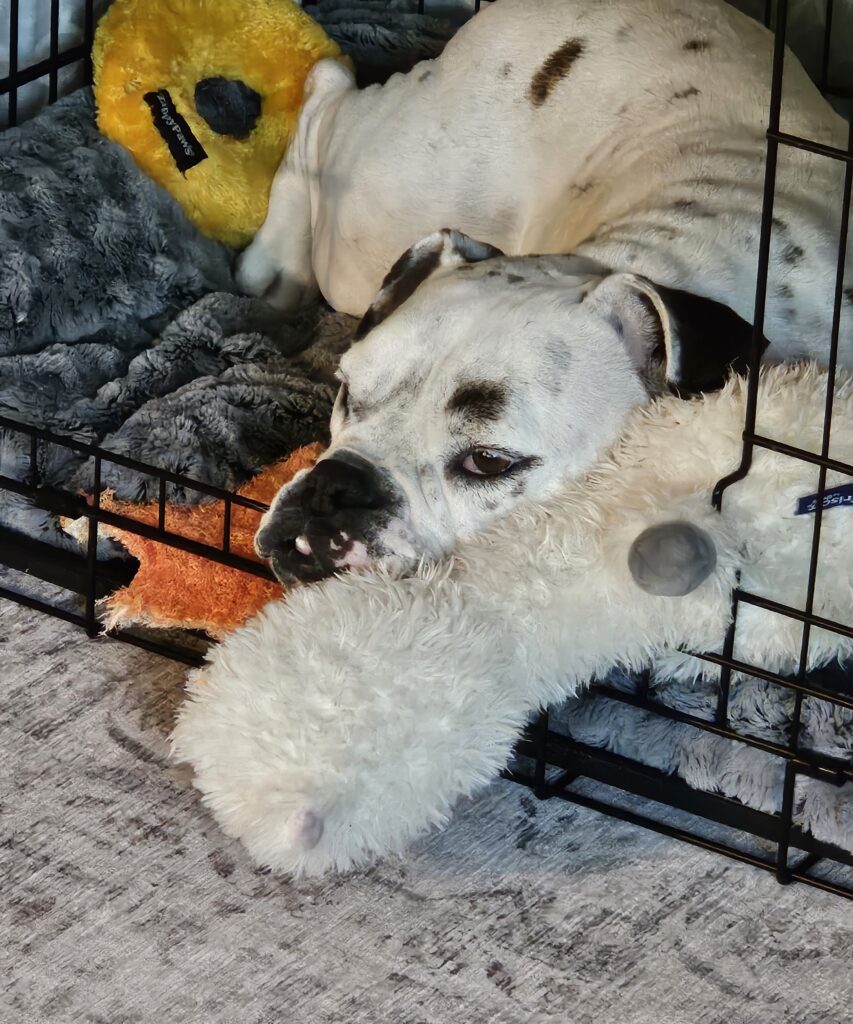Posts Tagged: canine
After You Get Your Puppy by Ian Dunbar
Enhancing Canine Mental Health Through Exercise
Our beloved canine companions bring immeasurable joy into our lives, showering us with love and loyalty. However, just like humans, dogs can experience mental health challenges that impact their well-being. One powerful way to support their mental health is through regular exercise. In this article, we’ll delve into how exercise benefits our furry friends’ mental wellness and why it’s crucial for their overall happiness.
Regular exercise serves as a natural stress reliever for dogs, triggering the release of endorphins that promote relaxation and reduce anxiety. Whether it’s a leisurely walk or an energetic game of fetch, physical activity provides an outlet for pent-up energy and stress, leading to a calmer and more balanced demeanor.
Preventing boredom is essential for a dog’s mental well-being. Without adequate mental stimulation, dogs may resort to undesirable behaviors such as excessive barking or destructive chewing. Engaging in activities that challenge their minds, such as obedience training or puzzle toys, helps keep their brains sharp and engaged. Regular exercise not only tires them physically but also provides important mental enrichment, keeping them mentally sharp and content.
Exercise isn’t just beneficial for your dog—it’s also a fantastic bonding opportunity for the two of you. Whether it’s a leisurely stroll around the neighborhood or an adventurous hike at the beach, spending quality time together strengthens the bond between you and your furry companion. Dogs thrive on companionship, and engaging in activities together reinforces your relationship while also promoting their mental and emotional well-being.
Regular exercise plays a crucial role in managing and preventing behavioral issues in dogs. Dogs with excess energy are more prone to behavioral problems such as hyperactivity or aggression. By incorporating daily exercise into their routine, you can help channel that energy into positive outlets, reducing the likelihood of undesirable behaviors. A well-exercised dog is not only happier but also more relaxed and better behaved, making life more enjoyable for both of you.
Exercise is a vital component of maintaining your dog’s mental and emotional well-being. By providing regular opportunities for physical activity and mental stimulation, you can help your furry friend lead a happier, healthier life. Whether it’s a simple game of fetch or a challenging agility course, prioritize exercise as a cornerstone of your dog’s overall wellness.
Moreover, the benefits of exercise extend beyond our canine companions. Participating in activities together strengthens the bond between you and your dog, providing quality time for both of you to enjoy. Additionally, regular exercise promotes human health by encouraging physical activity and reducing stress levels. So, lace up those sneakers, grab your pup’s leash, and embark on a journey to improved well-being together. Remember, a tired dog is a happy dog, and a happy owner too!
Smooth Dog Introductions: Quick Guide for Success
Introducing a new dog to your home? Plan ahead for success by being patient and avoiding assumptions about instant friendship. A little extra time upfront can prevent issues later. Follow these quick steps for a seamless transition:
Before entering the house:
- Meet on neutral ground with leashes, maintaining a 10-15 feet distance, and feed very tasty treats continuously.
- Keep leashes loose, allow a 2-second greet-and-sniff, then call dogs away with treats continuously.
- Now, initiate a short walk with both dogs. If initial greetings are tense, start on separate sides of the street. Gradually close the gap as the dogs relax, fostering a side-by-side stroll
In the yard:
- Allow supervised playtime, with leashes on for safety.
- Should a fight break out, use noise (your voice, clanging or banging pans) to stop it. If that doesn’t work, use the leashes to separate the dogs. Never reach in between two fighting dogs.
In the house:
- The first time the dogs are inside the house together, keep them on leash and keep the introduction brief, around 5 minutes.
- Then confine the newcomer to a comfortable space like a spare room, crate, or a dog-proofed, enclosed area where he can start to get used to his new home away from the attention of other pets.
- Over the next day or two, repeat the brief introductions. Keep them to 5-10 minutes and keep the dogs on leash. If a squabble breaks out, leashes make it easy to pull the dogs apart.
- Reward positive behavior with treats, praise, and toys.
- Don’t be tempted to try longer periods of time if the early introductions go well. Slowly work your way to longer and longer periods of dog-dog time.
- Every now and then, confine your other dog (and any other pets) and let the newcomer explore the house by himself.
Training Tip:
- Avoid punishing or scolding; separate calmly and retry later.
Follow these steps, and your new dog will likely become a cherished family member in just a week or two. If issues persist after two weeks, contact us for help.





